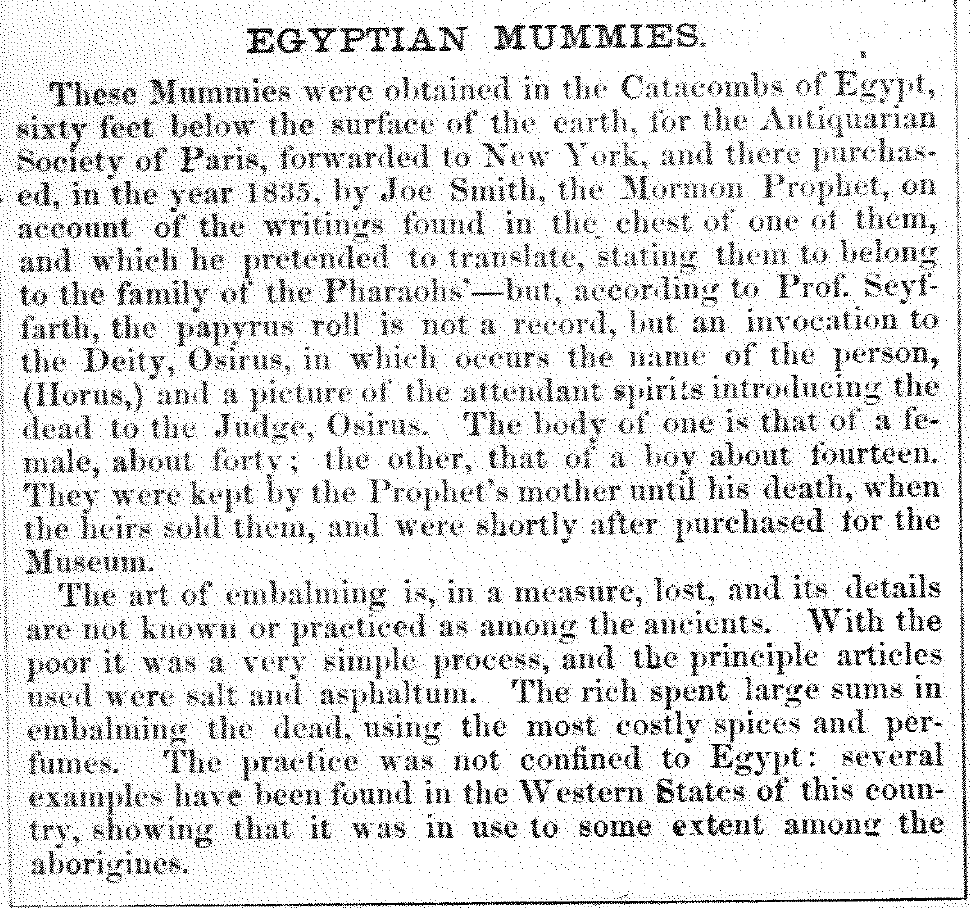CM catalog for 1863 indicating possession of JS Papyri and mummies.
- Type
- Book
- Source
- Chicago Museum Non-LDS
- Hearsay
- Direct
- Reference
A Complete Guide to the Chicago Museum (Chicago, IL: Evening Journal Book and Job Print, 1863), 42
- Scribe/Publisher
- Evening Journal Book and Job Print
- Audience
- Reading Public
- Transcription
Egyptian Mummies.
These Mummies were obtained in the Catacombs of Egypt, sixty feet below the surface of the earth, for the Antiquarian Society of Paris, forwarded to New York, and there purchased, in the year 1835, by Joe Smith, the Mormon Prophet, on account of the writings found in the chest of one of them, and which he pretended to translate, as stating them to belong to the family of the Pharaohs'—but, according to Prof. [Gustav] Seyffarth, the papyrus roll is not a record, but an invocation to the Deity Osirus, in which occurs the name of the person, (Horus,) and a picture of the attendant spirits, introducing the dead to the Judge, Osirus. The body of one is that of a female, about forty—the other, that of a boy, about fourteen. They were kept by the Prophet's mother until her death, when the heirs sold them, and shortly after, were purchased for the Museum.
The art of embalming is in a measure lost, and its details are not known or practised as among the ancients. With the poor it was a very simple process, and the principal agents used were salt and asphaltum. The rich spent large sums in embalming the dead, using the most costly spices and perfumes. The practice was not confined to Egypt. Several examples have been found in the Western States of this country, showing that it was in use to some extent among the aborigines.
- Citations in Mormonr Qnas
The B. H. Roberts Foundation is not owned by, operated by, or affiliated with the Church of Jesus Christ of Latter-day Saints.

